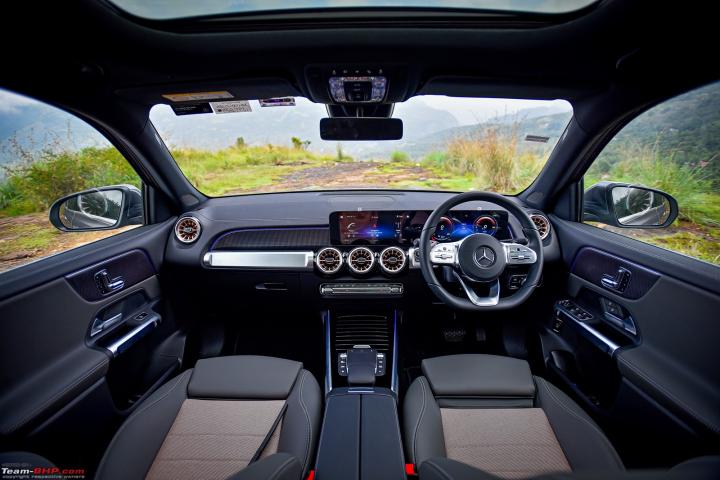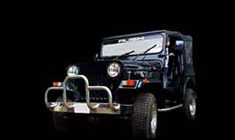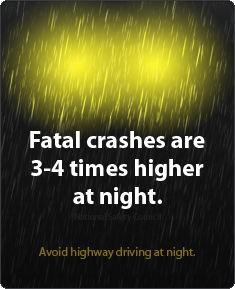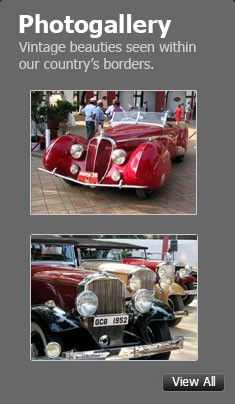News
2022 Mercedes-Benz EQB 300 4Matic: Observations after a day of driving
Poke the A pedal, and the EQB's got some serious shift, putting the 390 Nm to use briskly, again, unlike an internal combustion engine that might hesitate for a bit.
Driving the EQB 300 4Matic:
The EQB is based on EVA 1.5 architecture, meaning it's an ICE platform adapted for EV applications. What that also means is that unlike the EQS, the bonnet isn't sealed and you can take a look at what's underneath.
It's pretty busy in there, and does look a little messy without a top cover. The high-voltage cabling and associated bits are orange as per required standards and there isn't much that's user-serviceable, except the fluid reservoirs needing an occasional top-up. The powertrain and associated bits are best left to the professionals, especially because quite a few elements are capable of causing serious harm when mishandled due to high voltages.
The 66.5 kWh battery is capable of putting out a total 225 BHP and 390 Nm through the two electric motors, whose power demand is sampled 100 times per second according to Mercedes and appropriately managed based on the driving situation through the 4Matic system.
Battery consumption is optimized by using the rear motor as much as possible in urban traffic conditions, with the front motor kicking in when you demand grunt.
With your foot on the brake pedal, push the START button on the dash, and the instrument cluster shows "READY" indicating that the EQB is all set. No engine note, start-up shake or cold clatter like petrol or diesel powered cars. Just silence. It's eerie, in a likeable sort of way.
Slot the gear shifter into D and release the brake pedal, the EQB crawls forward gently. Poke the A pedal, and the EQB's got some serious shift, putting the 390 Nm to use briskly, again, unlike an internal combustion engine that might hesitate for a bit. Keep your foot on it and the acceleration is linear and relentless, with triple digit speeds popping up in no time. It's not as brutal as the EQS that does the 0-100 km/h dash in about half the time, but the EQB is potent nonetheless and the sheer silence and lack of drama adds to the spectacle.
Whether it's pottering around town, closing gaps in traffic, or cruising on undivided highways with rare opportunities to pass slower vehicles, the EQB is equally at home. It's even more impressive because the EQB weighs a sizeable 2,175 kilos, the battery pack alone accounting for 469 kg. The 0-100 km/h dash takes 8 seconds, while the top speed is electronically limited to 160 km/h, but that number is academic in a country where both the legal and practical top speeds are well inside that limit. We never found the EQB wanting on the highway.
There are 4 driving modes: Eco, Comfort, Sport & Individual. Each driving mode has specific settings for throttle response, steering feel and ESP. Individual mode lets you configure each setting separately based on your preference. Comfort mode was our default choice around town and cruising on the highway, while we used Sport when driving enthusiastically, putting its weightier steering feel and crisp throttle response to good use and having some fun.
NVH is great, thanks in part to features like noise encapsulation around the electric motors, optimized motor coupling and insulation of the passenger compartment. Motor whine is barely perceptible except in completely silent environments. The 'whoosh' noise you make in your head as the acceleration makes you giggle, is probably the loudest thing in the cabin.
Range and Charging:
A claimed WLTP range of 423 km means that the EQB isn't exactly a potential tourer like its sedan sibling, the EQS, but runs like Mumbai-Pune or Bangalore-Mysore, for example, should be doable. City use of 40-50 km a day should get you an entire work week of use before plugging it in.
We started our test drive with a fully charged battery showing a 480 km estimated range, which we found rather optimistic, but once we set out downhill from Kodaikanal to Madurai, we actually found the range going up as we drove along! Credit part of that to not using the A/C and the recuperation working well while going downhill, but we offset quite a bit of that with driving uphill on some steep and narrow town roads to picturesque locations. All said, imagine our surprise when we actually reached the foothills with the range estimate showing 540-odd km! The range did drop by about 60 km the moment we turned on the A/C, but the consumption then stayed stable for the rest of our drive, until we eventually parked in Madurai, having driven about 120 km in all sorts of terrain, with 400-odd km of estimated range left. We suspect it'd be a lot less if we'd driven uphill to Kodaikanal instead, but we didn't get a chance to test that. All said, this car should be able to do its rated WLTP range if not a little more with a combination of enthusiastic driving and cruising.
When it does need a charge, the choices are between a 11 kW AC charger - that Mercedes will install at your premises, complimentary! - that takes about 6.5 hours for a 10-100% charge, or a 100kW DC fast charger that can top up 10-80% while you enjoy a coffee and a donut, in 32 mins! The combination of decent range and overnight charging with the 11 kW AC charger should suffice for most users.
Suspension:
Ride & Handling
In one word, fantastic!
The EQB is a fairly heavy car at 2+ tonnes and we were skeptical about how it would fare with (usually) firm RFT tyres, but our skepticism was laid to rest over the course of our test drive.
The EQB glides along on broken roads, immediately impressing yours truly and the especially hard-to-impress Turbanator in equal measure. Bad patches are taken without fuss at 20-40 km/h, and the ubiquitous thuds we felt on our Mercedes sedan rides on the same roads the day prior were missing in action.
The steering has an extra bit of play at dead center, but is precise and weighs up nicely as speeds pick up. The low center of gravity (CG) afforded by the nearly half-tonne battery pack mounted down low results in good balance and minimal body roll around corners. We had great fun on the twisty downhill sections on the descent from Kodaikanal.
The precise steering, low CG, weight distribution and mature suspension combined with the torquey electric powertrain make the EQB effortless to drive. The SUV form factor means it's ultimately no corner carver, but there's still plenty of fun to be had.
We took the car rough-roading to test its moderate 155 mm ground clearance and traction, and it works like a charm. The four corners have decent articulation, and the car never felt like it would bottom out or hit the top of its suspension travel. We tried steep inclines, fairly deep rutted roads and a slippery uphill grassy knoll, and the EQB shifted its heft without complaint or scraping anywhere. The flat underbody gets ample protection and Mercedes' box-in-box safety design means there are reportedly three layers to get through for an external item to pierce the battery compartment. Short of hardcore off-road terrain, the EQB can handle pretty much everything Indian roads can throw at it.
Braking
For those of us daily-driving ICE cars with hydraulic servoed brakes, it takes a while to get used to the braking in electric cars as the pedal feel and progression just aren't the same with an electrically servoed setup. Add to that the regeneration braking and one would be well-advised to get comfortable before pushing their EVs to put some of that instant torque down.
The EQB gets disc brakes all around and braking is sharp without being snatchy.
Regeneration has multiple levels which can be adjusted using the steering-mounted paddle shifters, with the default mode set to moderate. Tap the right paddle, and you're basically free-wheeling off-throttle with barely any regen taking place. The cluster shows D+ in this mode.
Tap the left paddle twice to shift from D+ to D-, and regeneration gets aggressive. You feel the brakes come on when off-throttle, and the car sheds speed quickly. This mode can be especially useful while driving downhill to maintain control (akin to engine braking in ICE cars), and recharge the battery too (imagine your tank filling up as you drive!). It can get a little jerky when driving enthusiastically though and passengers may not appreciate the head-nodding it causes.
Continue reading the discussion on the Mercedes-Benz EQB 300 4Matic on our forum.























